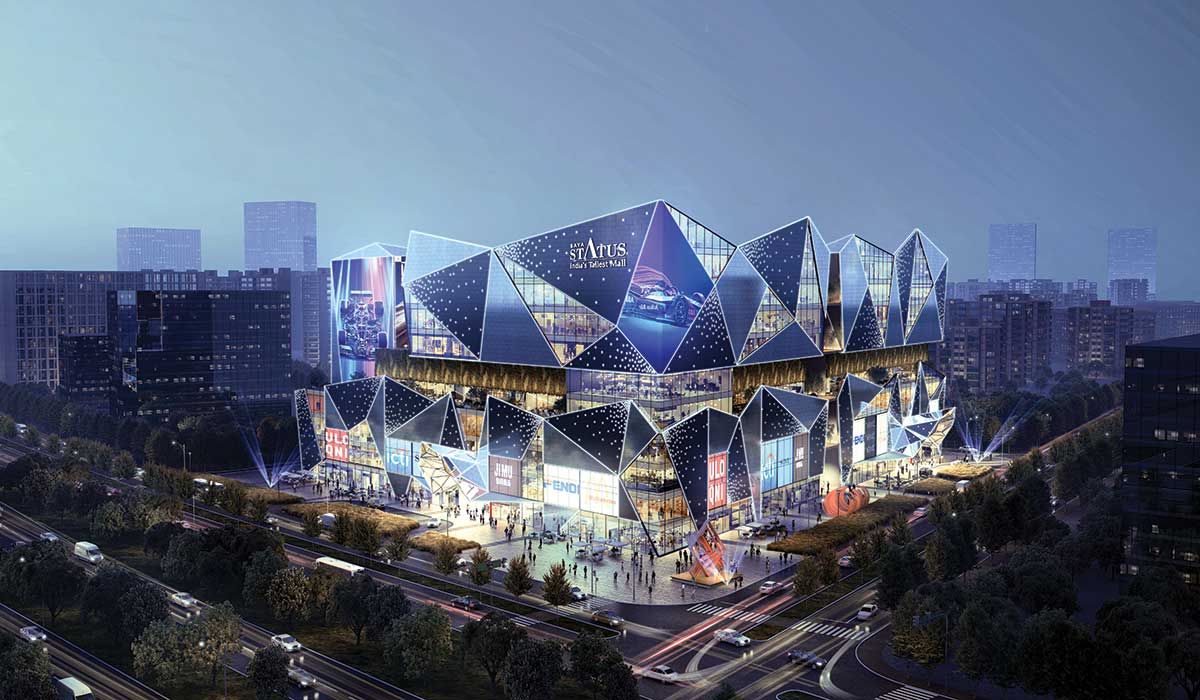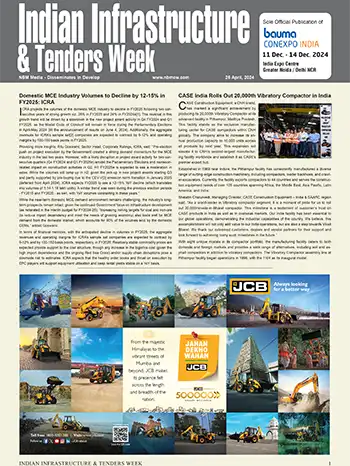Vinod Behl, Contributing Editor
What were the design considerations of Saya Status mall?
The mall’s design involves factors like spatial planning, functionality, aesthetics, and market considerations. The project also had its unique challenges and considerations like plot size and local regulations, due to which we had to ensure efficient space utilization. Our design solutions incorporate a mix of retail, entertainment, and dining spaces. The stores have floor-to-ceiling heights of 16.5 to 20 ft and all the store fronts face two large atriums with escalator banks in each atrium. There is a multi-level car parking for store side parking on the higher floors.
How does the design ensure sustainable construction and operation?
The energy efficient mall will have optimised HVAC systems, energy-efficient lighting fixtures, natural lighting, and renewable energy sources like solar panels. Sustainable features include low flow plumbing fixtures, landscaping, waterless urinals, rainwater harvesting, roof gardens, etc.Use of eco-friendly and recycled materials in the interiors and in the mall’s construction will help reduce the building’s carbon footprint. We will also incorporate a waste management system, recycling and waste segregation program for the waste generated.
In response to the Covid-19 pandemic, the Saya Status Mall will have wider aisles, common areas and seating arrangement that allow social distancing, touchless entry, contactless payment options, and sensor operated fixtures to reduce physical contact points. Besides, there will be sanitized stations placed throughout the mall for shoppers to maintain hand hygiene.
Please tell us about the striking façade, which is a unique feature of the mall.
What makes the façade stunning façade is the large anamorphic LED screen. The facade also stands out for its dynamism, vibrancy, and strong visual appeal.An efficient insulation in the façade will help reduce the heat transfer and minimize the energy required for cooling the interiors. Large size windows, skylights, and a transparent façade material allow ingress of natural lighting. Interlocking facets create a striking visual effect depending on the angle at which the facade is viewed.
By strategically placing the LED light fixtures, we have sought to create a dramatic effect with varying patterns and highlighting key architectural features. Branding elements in the façade design, an illuminated signage, and use of LED screens, will bring vibrancy and visual interest, while reflecting the identity of the mall and its tenants.
What are the current design trends in shopping centres today?
In recent years, several design trends have emerged in shopping centres, with a focus on enhancing customer experience while also adapting to changing consumer preferences. Some popular design trends include:Seamless Integration of Online and Offline Experiences: With the rise of e-commerce, shopping malls are striving to create integration between online and offline experiences. This includes offering click-and-collect-services, providing digital wayfinding tools, and integrating technology to enhance the overall shopping journey.
Multifunctional Spaces: Shopping malls are incorporating multi-functional spaces that go beyond traditional retail, offering co-working areas, event spaces, pop-up shops, and interactive zones. This trend aims to create a destination where people engage in various activities that go beyond shopping.
Enhanced F&B Options: F&B has become a crucial aspect of shopping centres, incorporating diverse and high-quality dining options such as trendy restaurants, speciality café, bars and pubs.
Green Spaces: Rooftop gardens, outdoor seating areas, and indoor plants, are providing a refreshing environment; they provide a respite for shoppers while enhancing the overall aesthetic appeal.
Technology Integration: Smart parking systems, interactive digital signage, augmented reality experiences, mobile apps for personal shopping, and contactless payment are enhancing customer convenience and engagement.
New age malls demand a winning combination in terms of interior designing, use of eco-friendly materials and technology. How has DP Architects addressed this demand?
In designing new-age malls, architects aim to create a dynamic and engaging environment for shoppers. We have sought to create visually appealing interiors with a cohesive design that reflects the mall’s brand. Careful spatial planning ensures efficient pathways, wayfinding, and resting spaces for shoppers. As regards zoning, we have designed distinct areas for retailers, entertainment, dining, and relaxation, and flexible spaces for accommodating events, pop up shops, etc.A mix of textures and finishes create visual interest and provide a tactile experience for shoppers. We encourage use of eco-friendly and recyclable/recycled materials, low VOC paints, and responsibly sourced wood, etc to align with our sustainable design practices. We select materials that can withstand high footfalls and are easy to maintain to ensure long term sustainability and minimize operating costs.
Digital signage across the mall creates dynamic and customizable content, including advertising, wayfinding, and promotional messages. Implementing AR technology enhances the shopping experience; these include virtual fitting rooms, interactive product displays, and gaming.
Many new-age malls are developing mobile applications that provide personalized offers, real time updates, navigation assistance, and beacons for location-based notifications and promotions. Intelligent parking systems enable shoppers to easily find parking spaces through real time availability updates or automated parking guidance, including ticketless parking.
What do foreign architects bring to the design table in terms of uniqueness vis a vis Indian architects?
Indian developers are increasingly hiring foreign architects’ this is because foreign architects often bring a global perspective to a project’s design, gained from working on diverse projects worldwide. They have experience in designing projects in diverse cultures and climate zones, and under various regulatory frameworks. Such exposure often bring forth innovative design solutions and the ability to adapt to various project requirements.Foreign architects may have different design philosophies and sensibilities and their design approach may bring to the table design concepts and styles that are new to the Indian market. Their fresh ideas and interpretations of architectural trends often push the boundaries of creativity. What’s more, they often have the expertise in advanced building technologies and familiarity with the latest design tools and software. They may be well versed in sustainable design practices, energy efficient solutions, and innovative construction methods.















